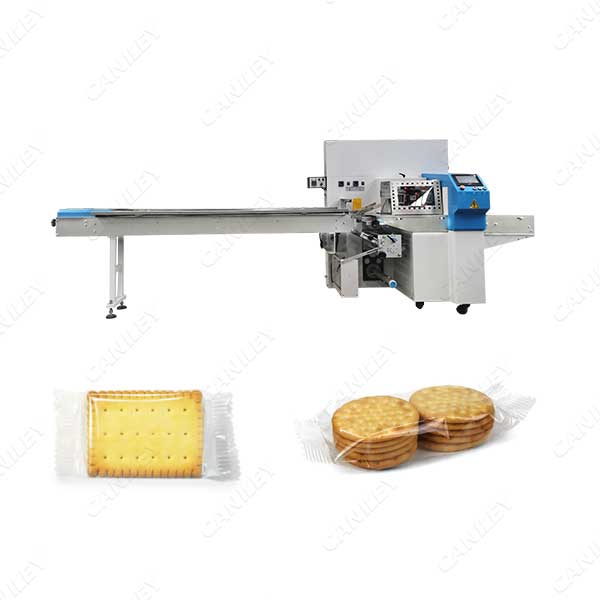Packaging plays a pivotal role in the modern consumer-driven world. It not only ensures the safe transportation and preservation of products but also acts as a marketing tool to capture the attention of potential buyers. One of the most commonly consumed and packaged items is the humble biscuit. The purpose of packaging biscuits goes beyond mere containment – it encompasses protection, preservation, branding, and convenience. In this article, we explore what is the purpose of packaging the biscuits and delve into the main packaging equipment used in the industry.

The purpose of biscuit packaging:
Protection and preservation: Biscuit packaging is primarily designed to safeguard the delicate nature of these baked goods. Biscuits are susceptible to breakage, moisture, and air, which can impact their taste, texture, and overall quality. Proper packaging materials, such as moisture-resistant films and airtight seals, act as barriers against external elements, thereby extending the shelf life and maintaining the biscuit's original flavor and freshness.
Hygiene and safety: Biscuit packaging ensures that the product remains uncontaminated and safe for consumption. In a world where food safety is paramount, packaging prevents contact with dust, pollutants, and human touch, reducing the risk of contamination.
Branding and marketing: The packaging serves as a canvas for branding and marketing strategies. The design, colors, graphics, and logo on biscuit packages are meticulously chosen to create a visual appeal that entices potential buyers. Effective packaging can create an emotional connection with consumers and influence purchasing decisions.
Convenience: Modern packaging is designed for consumer convenience. Portion control, easy opening mechanisms, and resealable features make it convenient for consumers to enjoy biscuits on the go without worrying about freshness or spillage.
Information dissemination: Packaging also serves as a medium to convey essential information about the product. Nutritional facts, ingredients, allergen warnings, and usage instructions are typically printed on the packaging, enabling consumers to make informed choices.
Main biscuit packaging equipment:
Form-fill-seal (ffs) machines: These automated machines create the entire package, from forming the pouch to filling it with biscuits and then sealing it. Ffs machines are efficient and widely used for high-volume production.
Cartoning machines: These machines are used for packaging multiple biscuit packs into larger cartons or boxes. They are crucial for bulk distribution and retail packaging.
Flow wrapping machines: Flow wrappers are used for creating airtight seals around individual biscuits or groups of biscuits. They use a continuous plastic film to wrap and seal the product, ensuring freshness and protection.
Vacuum packaging machines: Vacuum packaging removes air from the packaging, creating a vacuum-sealed environment that enhances shelf life and preserves freshness.
In conclusion, biscuit packaging serves multifaceted purposes, ranging from protection and preservation to branding and consumer convenience. The intricate dance between packaging materials and equipment ensures that biscuits reach consumers in optimal condition, delighting taste buds and fulfilling expectations.





















